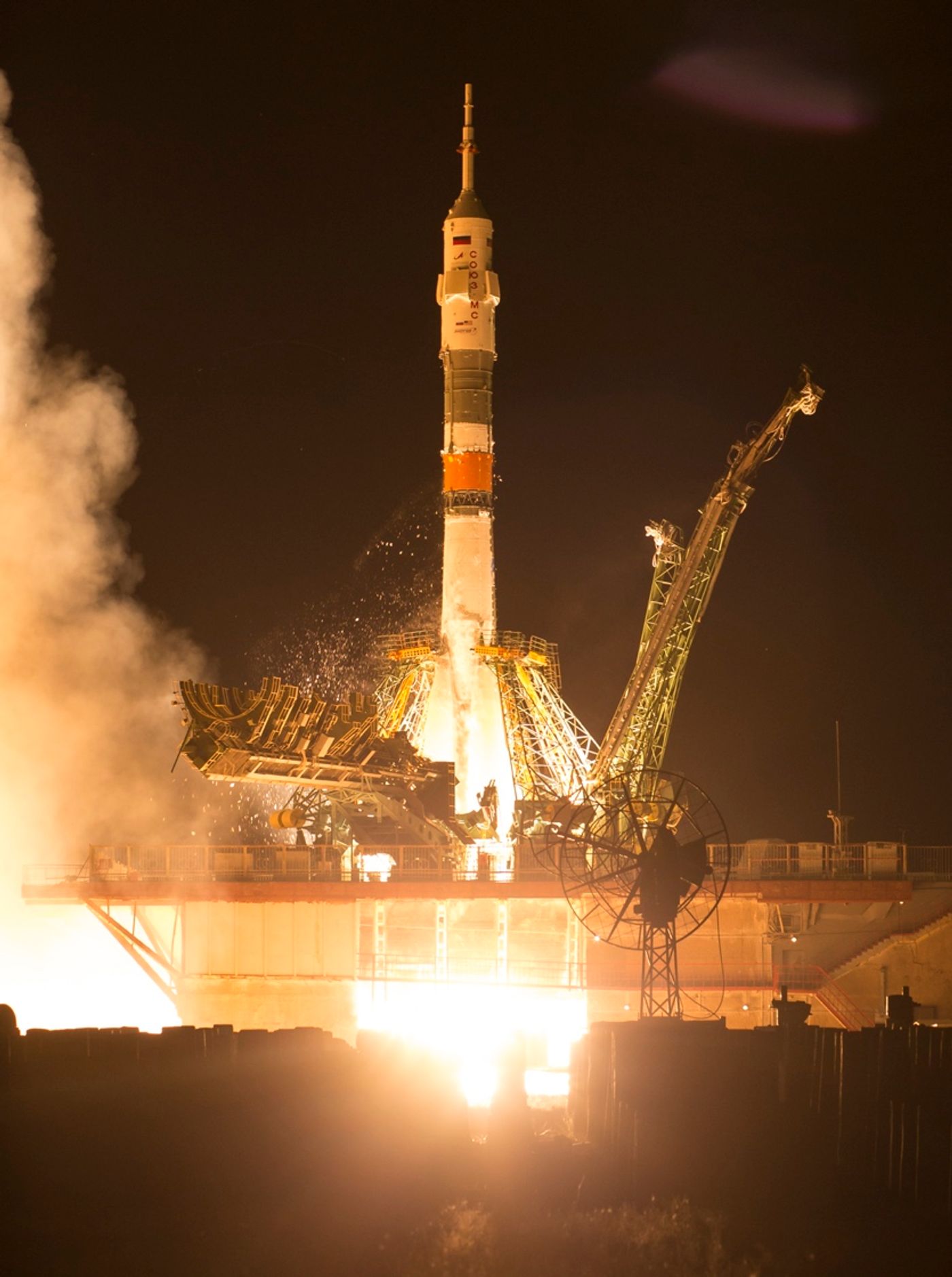International Space Station Receives Three New Occupants
The International Space Station is back up to full capacity this weekend after a Russian Soyuz spacecraft successfully lofted Expedition 60 to the Earth-orbiting space lab. The rocket blasted off from the Baikonur Cosmodrome in Kazakhstan at approximately 12:28 P.M. Eastern time.
Image Credit: NASA/Joel Kowsky
The crew of this latest launch was comprised of NASA’s Andrew Morgan, the European Space Agency’s Luca Parmitano, and Roscosmos’ Alexander Skvortsov. The three new arrivals will join Alexey Ovchinin, Christina Koch, and Nick Hague, who’ve each been residing at the International Space Station since March.
Both Parmitano and Skvortsov have been to the International Space Station before, but this is Morgan’s first visit. Morgan is poised to remain on the International Space Station until April of 2020, which gives him about nine months to conduct science experiments on behalf of NASA.
Notably, the timing of this mission aligns with the 50th anniversary of the historic Apollo 11 mission, which marked the first official lunar landing by an American in 1969.
"I can't think of a better way to commemorate the 50th anniversary of the Apollo moon landing than launching on the anniversary with an international crew, especially in light of NASA's reaffirmation that we intend to land a crew on the surface of the moon in 2024," Morgan said just before the launch.
Related: Mystery hole on the International Space Station was created from the inside
The crewed Soyuz spacecraft docked with the International Space Station on Saturday, enabling the inhabitants to enter the primary spacecraft.
With six crew members now residing on the International Space Station, NASA and other space agencies will take full advantage of the extra hands by ordering the completion of specialized tasks, such as docking and undocking space vehicles, handling microgravitational science experiments, and conducting spacewalks.
Much of this work will prepare the International Space Station for eventual privatization, a move that will enable the commercial and private sectors to utilize the Earth-orbiting space lab for profitable endeavors as NASA moves forward with plans to create the Moon-orbiting Gateway in coming years.









